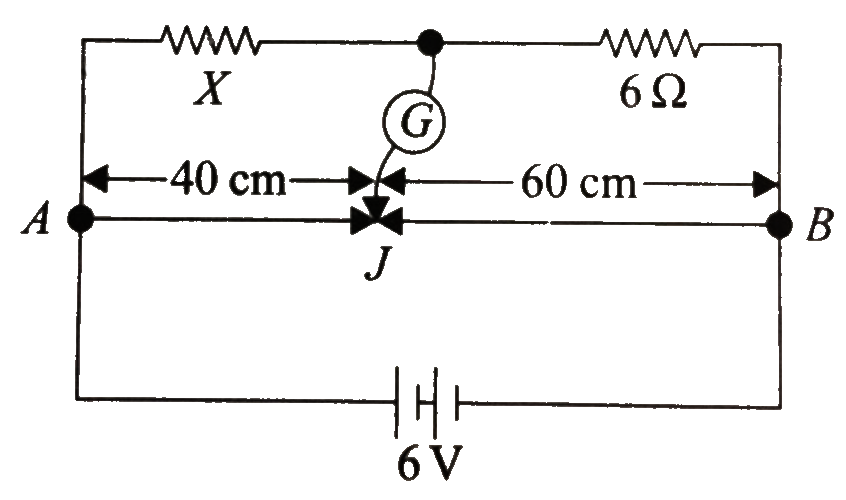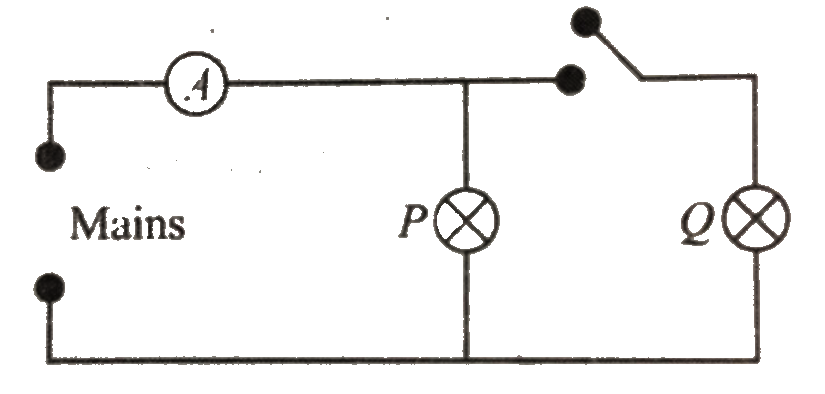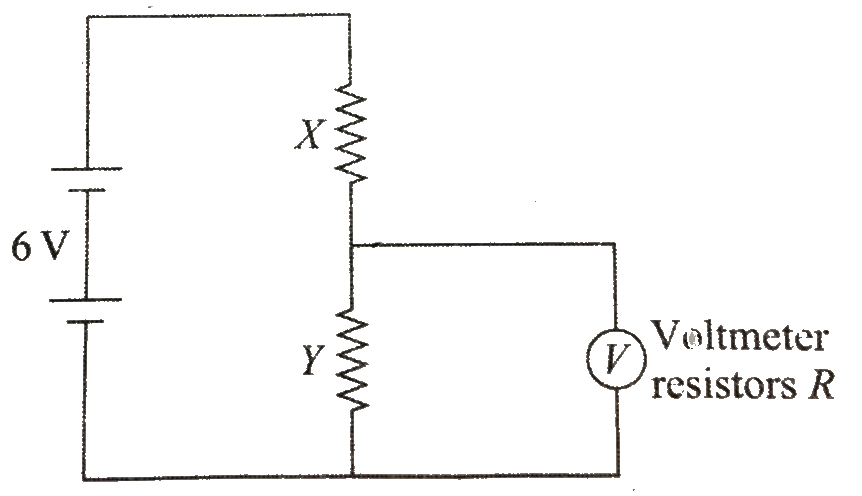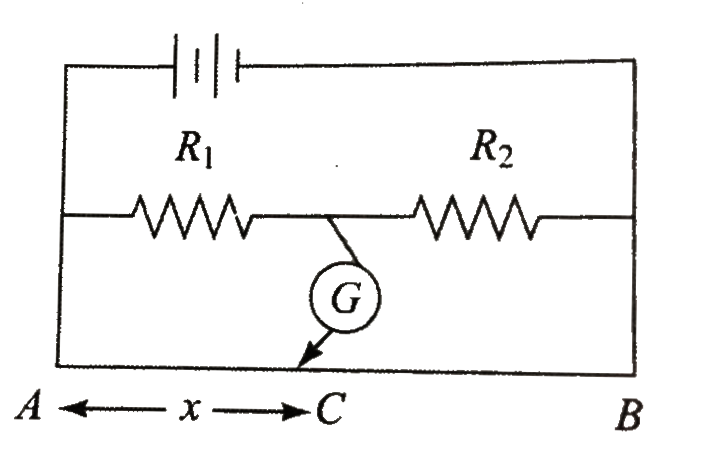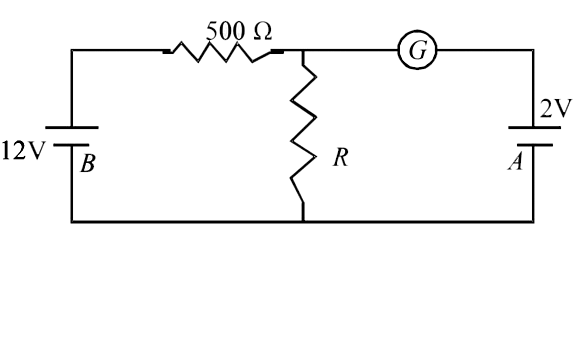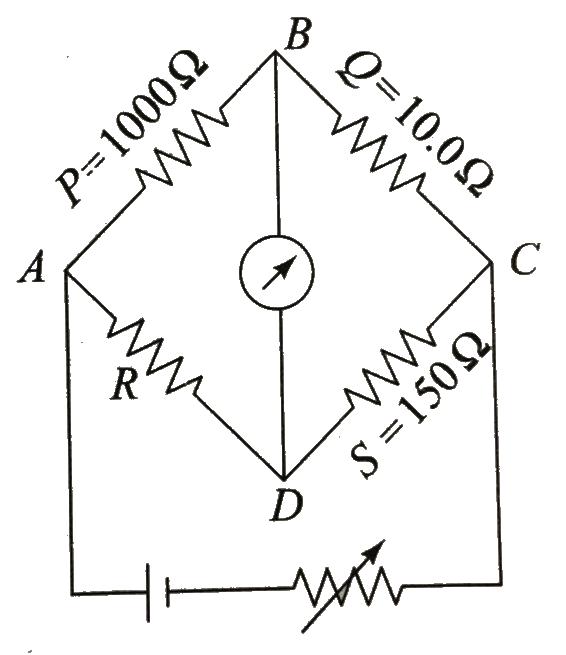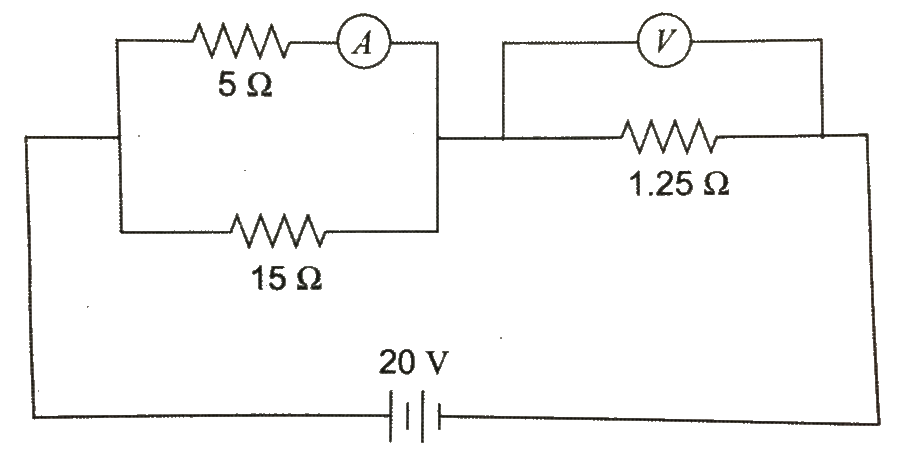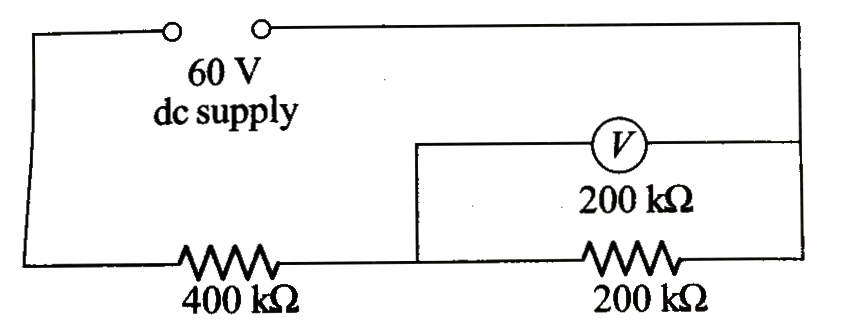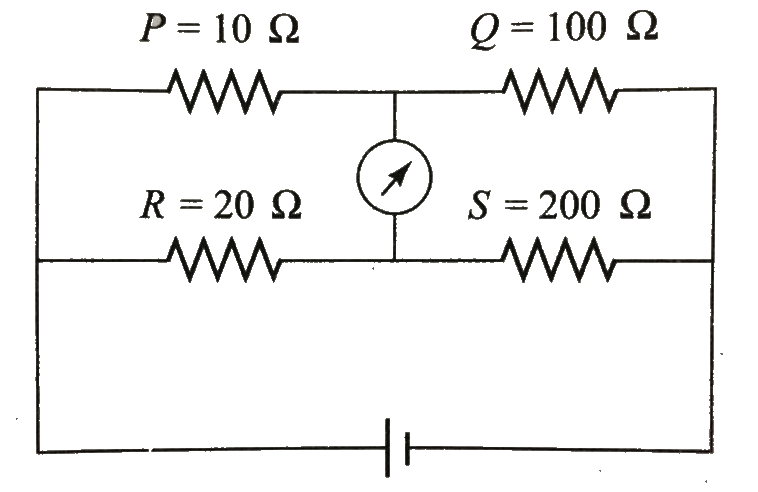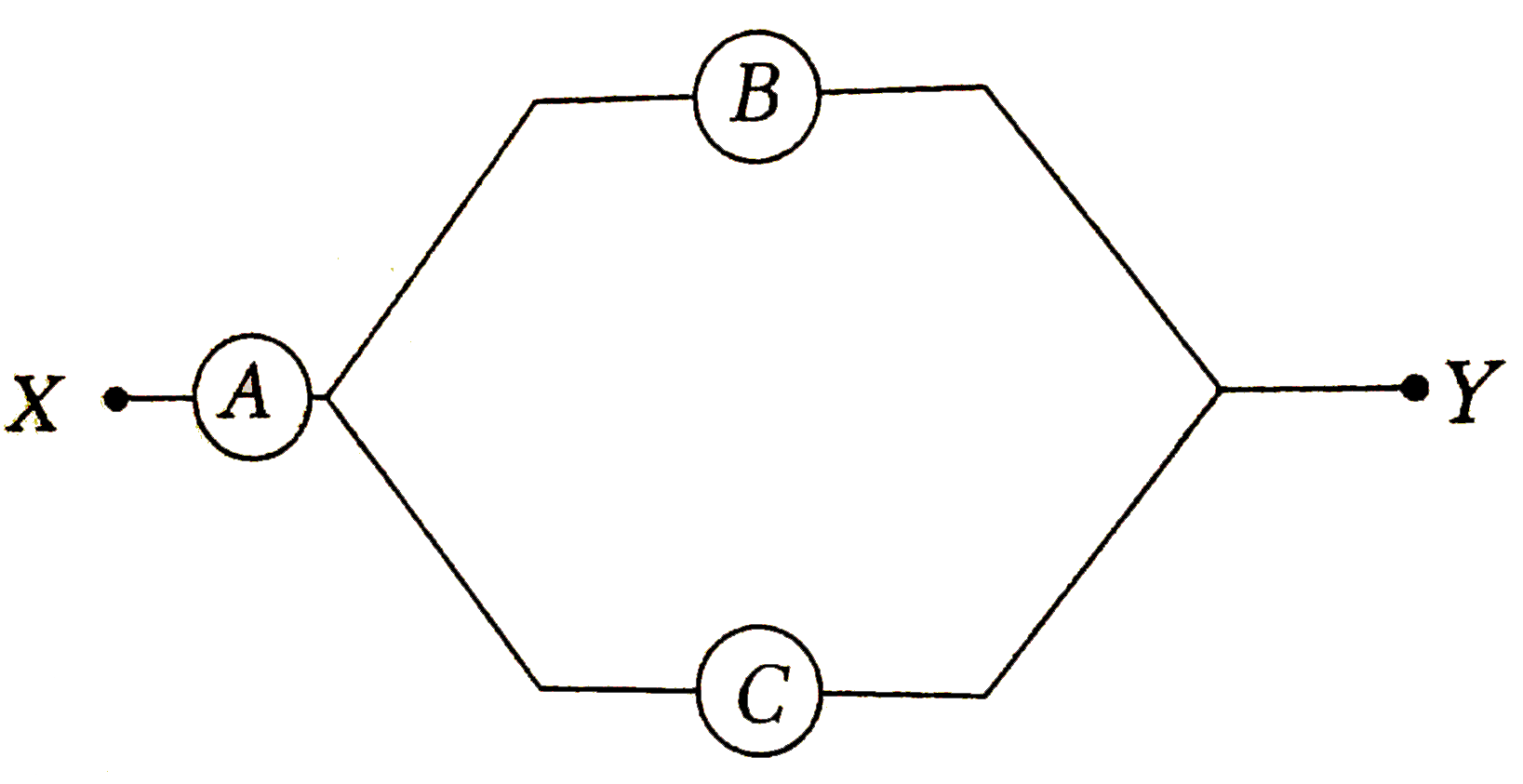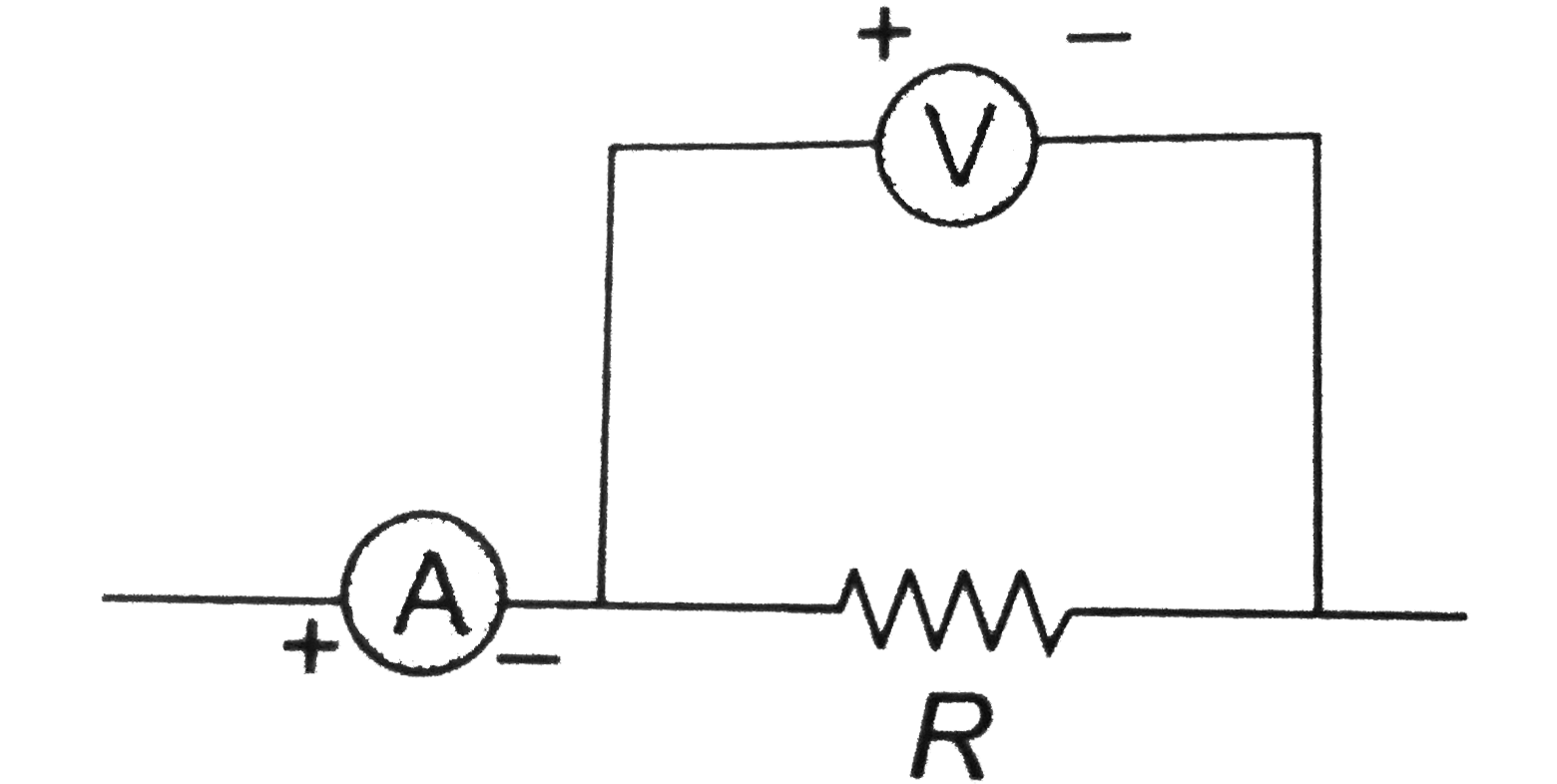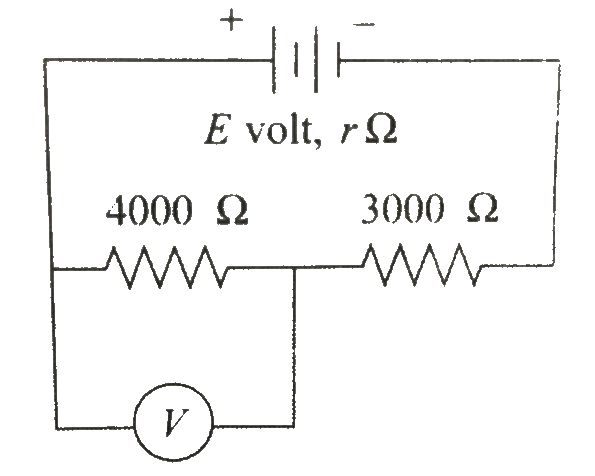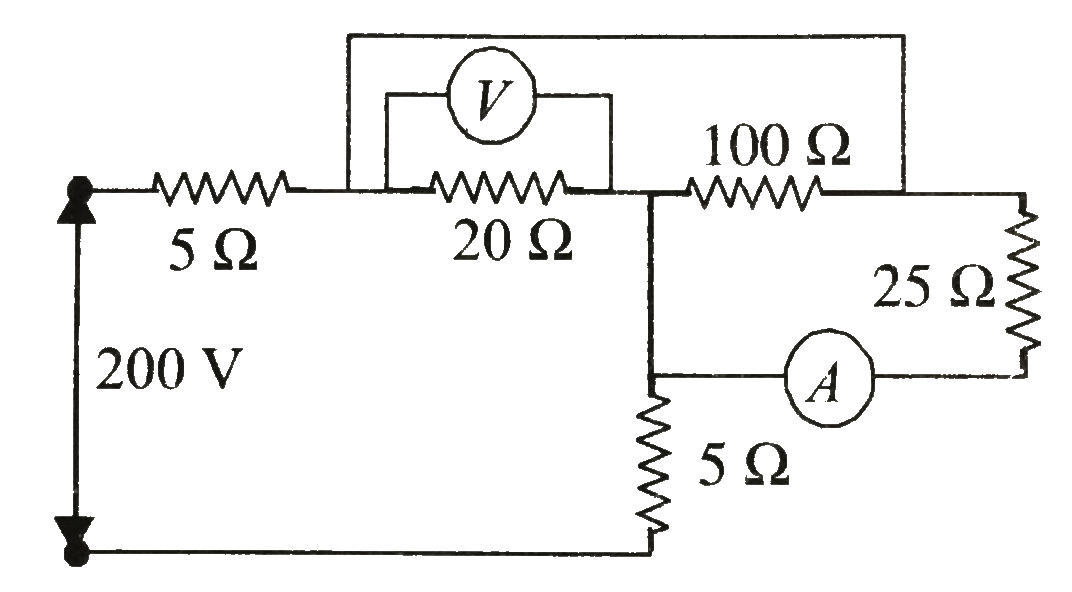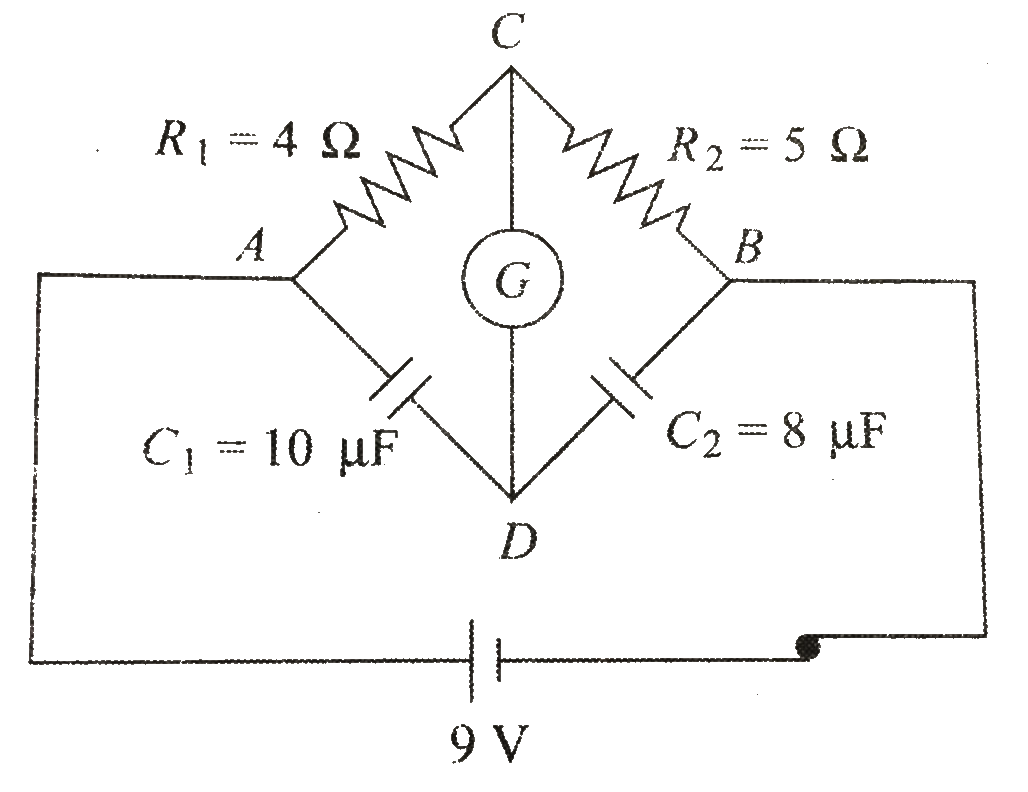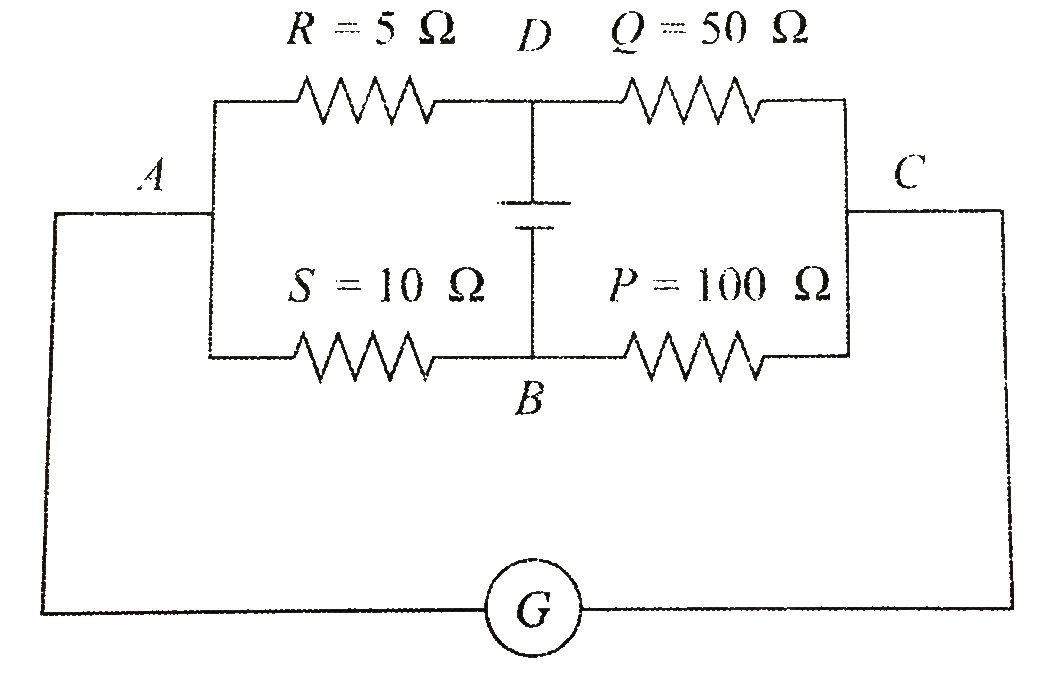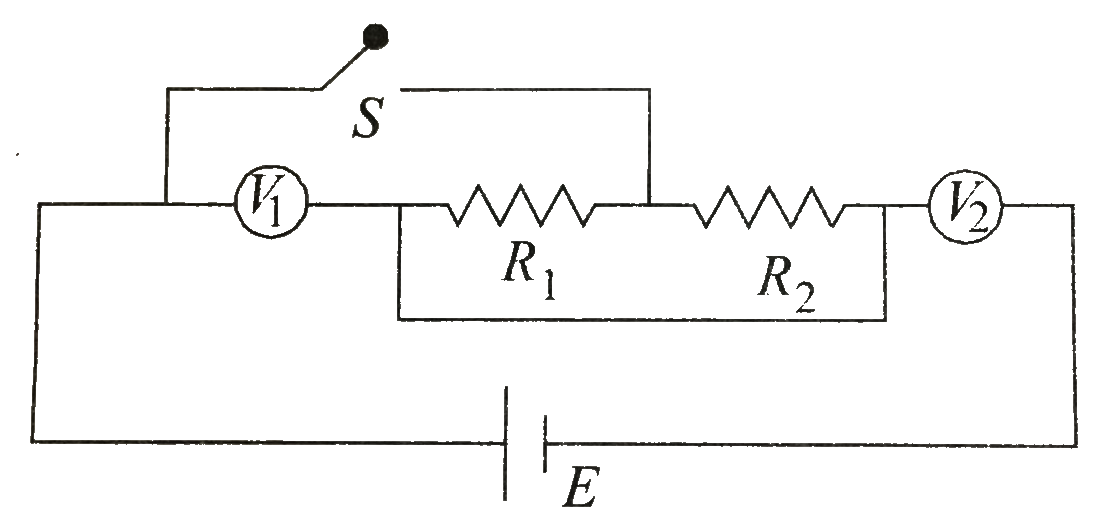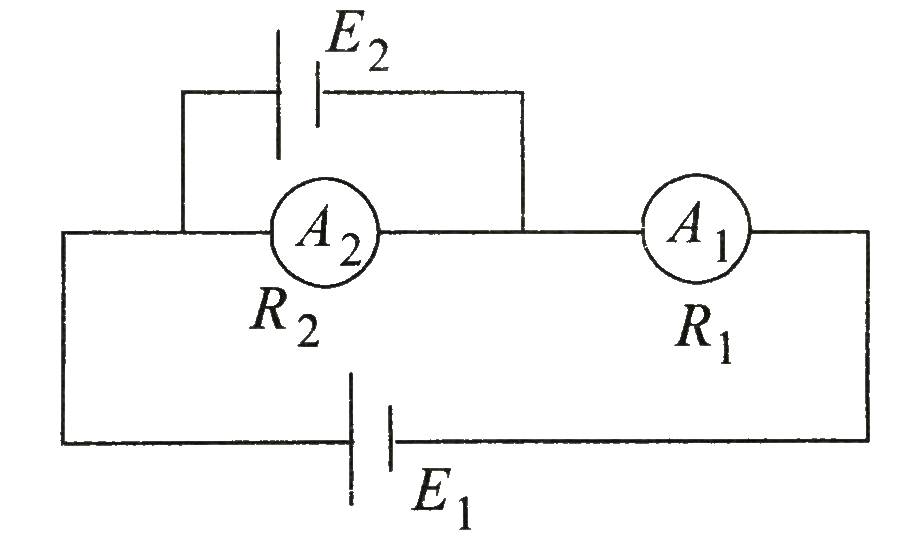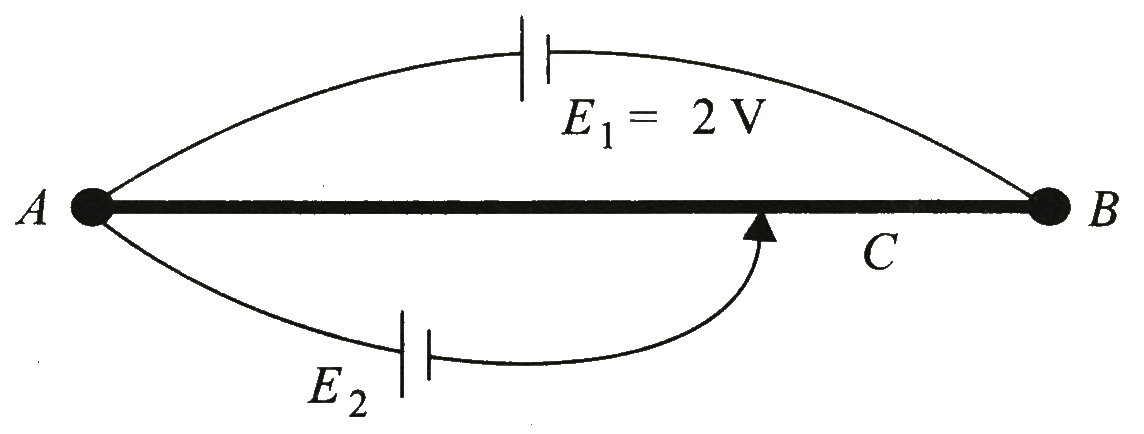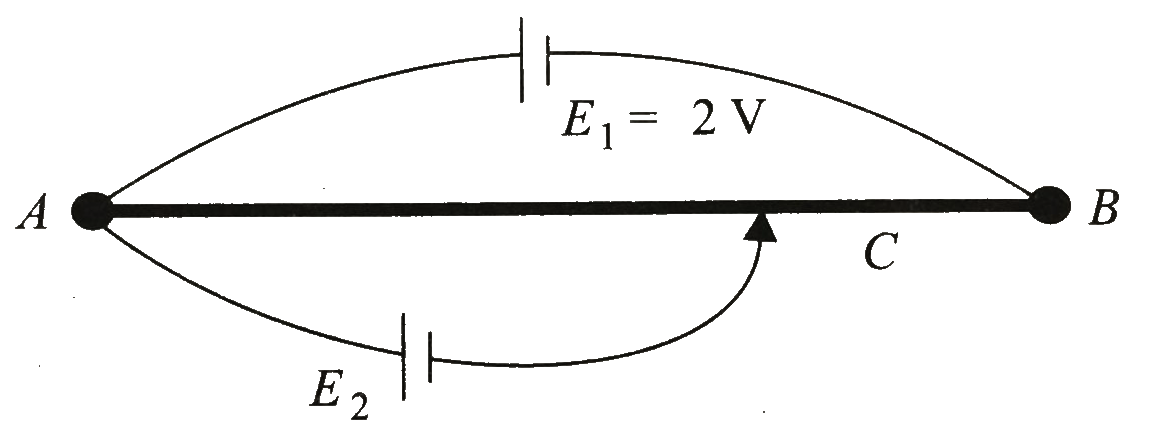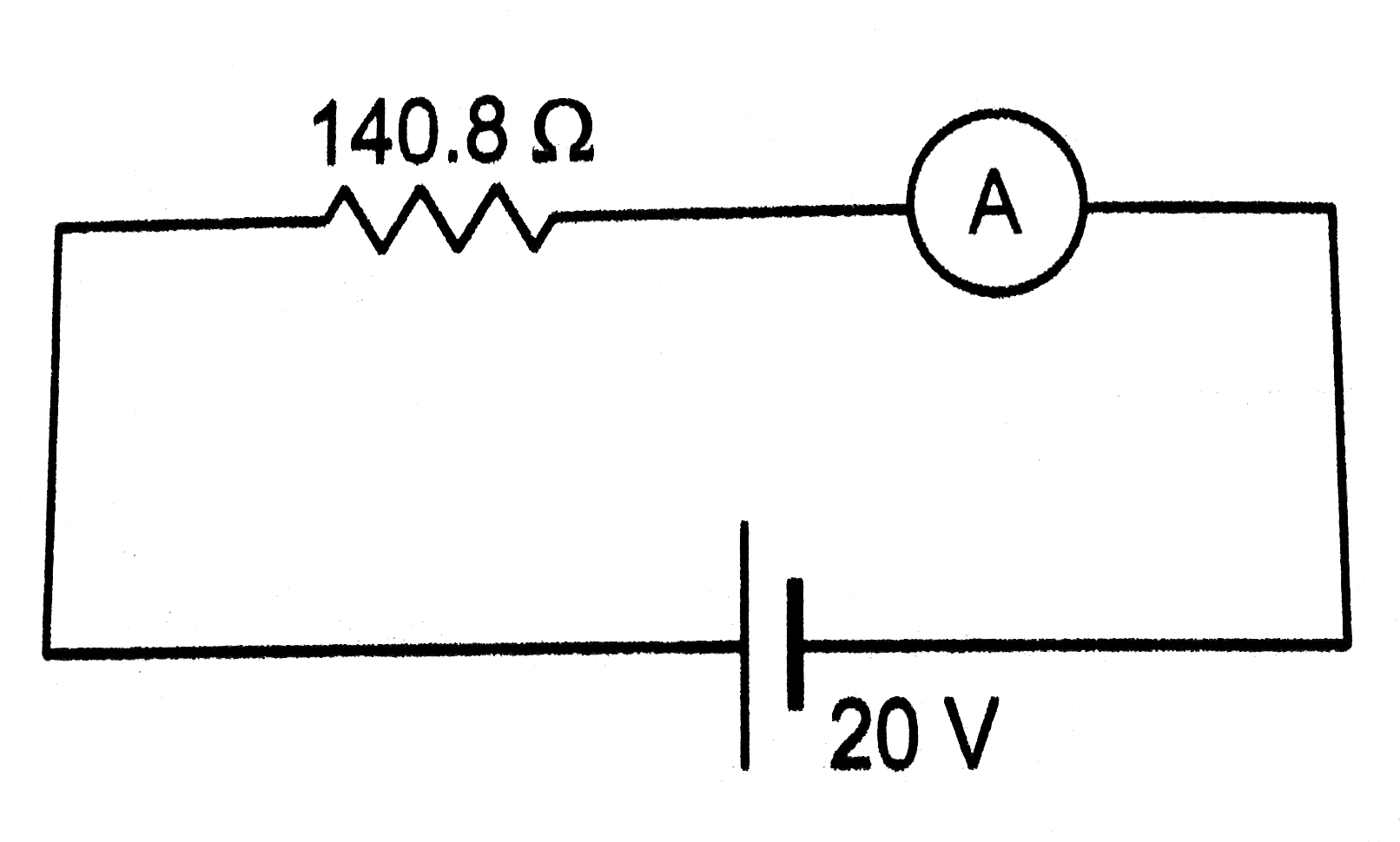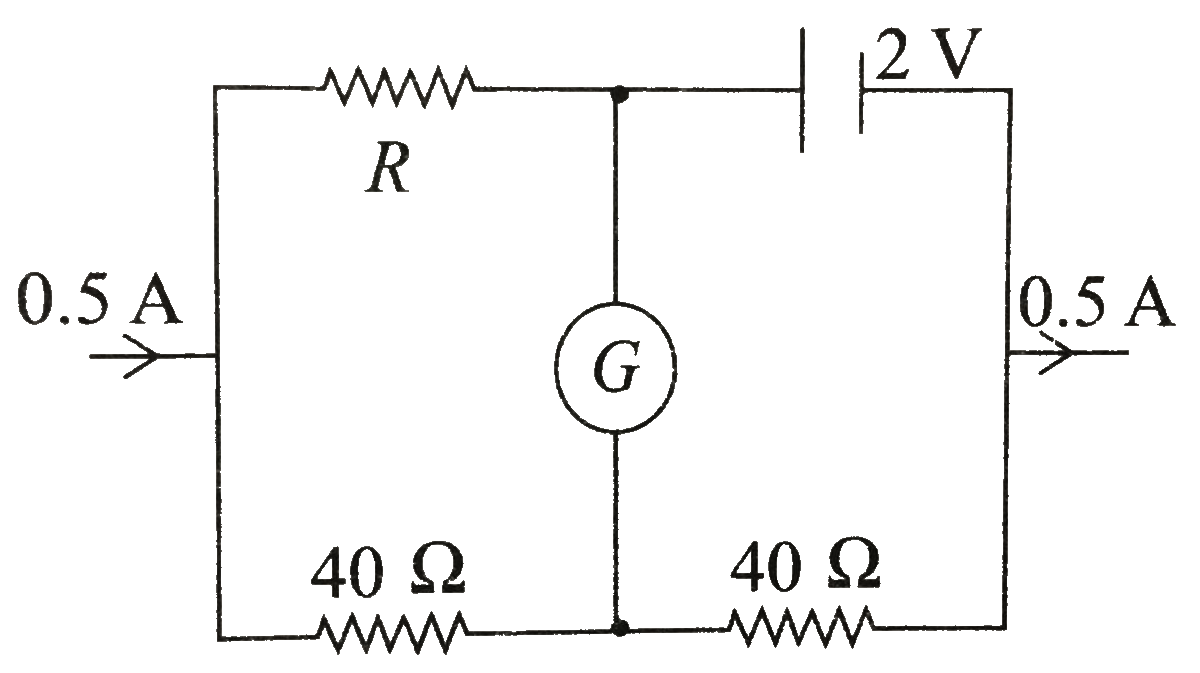Comprehansion from CENGAGE PHYSICS (ENGLISH) Chapter 11:ELECTRICAL MEASURING INSTRUMENTS for Class 12
| Class 12 | PHYSICS |
| Chapter | ELECTRICAL MEASURING INSTRUMENTS |
| CENGAGE PHYSICS (ENGLISH) | Comprehansion |
| Medium | English |
| Academic Year | 2023-2024 |
Question 7
Two unknown resistances X and Y are placed on the left and right gaps of a meter bridge. The null point in the galvanometer is obtained at a distance of 80cm from left. A resistance of 100Ω is now connected in parallel across X. The null point is then found by shifting the sliding contact toward left by 20cm. Calculate X and Y.View SolutionQuestion 11
In an experiment with a potentiometer, the null point is
obtained at a distance of 60cm along the wire from the
common terminal with a leclanche cell. When a shunt
resistance of 1Ω is connected across the cell, the null
point shifts to a distance of 30cm from the common
terminal. what is the internal resistance of the cell?View SolutionQuestion 12
In the experiment of calibration of voltmeter, a standard
cell of emf 1.1V is balanced against 440cm of
potentiometer wire. The potentail difference across the
ends of a resistance is found to balance aginst 220cm of the wire. The corresponding reading of the voltmeter is 0.5V. Find theerror in the reading of voltmeter. View SolutionQuestion 13
It is required to measure the resistance of a circuit operating at 120V. There is only one galvanometer of current sensitivity 10−6 A per division. How should the galvanometer be connected in the circuit to operate an ohmmeter? Why minimum resistance can be measured with such a galvanometer if its full-scale has 40 divisions?View SolutionQuestion 17
Figure 6.32 shows a meter bridge in the (which is nothing but a particle wheastone bridge), consisting of two resistors X and Y together in parellel with a meter long constantan wire of uniform cross section.
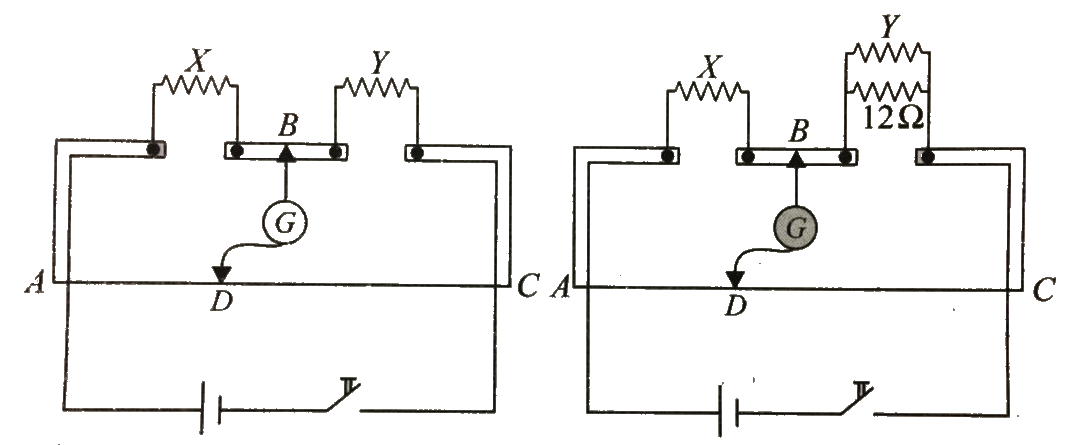
with the help of a movable contact d, one can change the ratio of resistance of the two segments of the wire until a sensitive galvanometer G connected across b and D shows no deflection. The null point is found to be at a distance of 33.7cm. The resistor Y is shunted by a resistance of 12Ω, and the null point is found to shift by a distance of 18.2cm. Determine the resistance of X and Y. View SolutionQuestion 18
The circuit shows in Fig . 6.33 shows the use of potentiometer to measure the internal resistance of a cell.
(a) When the key is open, how does the balance point change, if the driver cell decreases ?
(b) When the key is closed, how does the balance point change, if R is increased, keeping the current from the driver cell constant ?
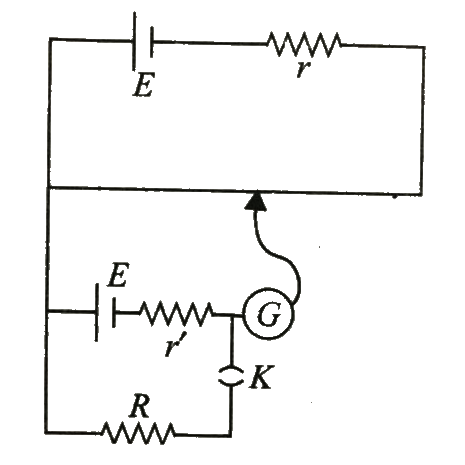 View Solution
View SolutionQuestion 19
Let V and I respresent, respectively, the readings of the voltmeter and ammetre shows in Fig. 6.34, and let RV and RV be their equivalent resistances. Because of the resistances of the meters, the resistnce R is not simply equal to V/I.
(a) When the circuit is connected as shows in Fig. 6.34 (a), shows that R=VI−RA
Explain why the true resistance R is always less than V/I.
(b) When the connections are as shows in Fig.6.34 (b)
Show that R=VI−(V/RV)
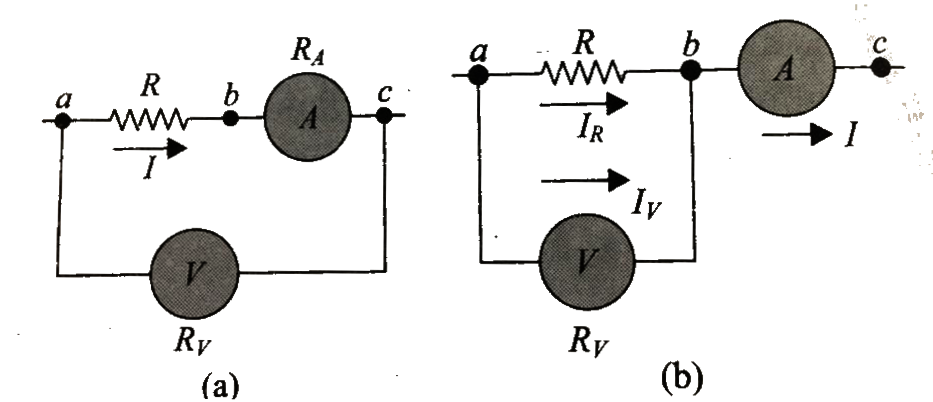
Explain why the true resistance R is always greater than V/I.
(c ) Show that the power delivered to the resistor in part
(i) is IV−I2RA and that in part (ii) is IV−(V2/RV) View SolutionQuestion 20
You are given two resistors X and Y whose resistances are to be determined using an ammeter of resistance 0.5Ω and a voltmeter of reistance 20kΩ. It is known that x is in the range of a few ohms. While Y is in the range of several thousand ohms. In each case, while of the following two connections (Fig. 6.35) would you choose for resistance measurement? Justify your answer quantiatively. [Hint : For each connection, determine the error in resistnce measurement. The connection that corresponds to a smaller error (for a given range of resistance) is to be perferred.]
 View Solution
View SolutionQuestion 21
Figure 6.36 shows a potentiometer with a cell of emf 2.0V and internal resistance 0.4Ω maintaining a potential drop across the resistor wire AB. A standard cell that maintains a constant emf of 1.02V (for very moderate current up to emf μA) gives a balance point at 67.3cm length of the wire. To ensure very low current is drawn the standard cell, a very high resistance of 600kΩ is put in series with it, which is shorted close to the balance point. The standard cell is then replaced by a cell of unknown emf ε and the balance point found, similary, turns out to be at 82.3cm length of the wire.
a. What is the value of ε?
b.What purpose does the high resistance of 600kΩ have?
c. Is the balance point affected by this high resistance?
d. Is the balance point affected by internal resistance of the driver cell?
e. Would the method work in the above situation if the driver cell of the potentiometer had an emf of 1.0V instead of 2.0V?
f. Would the circuit work well for determining an extermely small emf, say of the order of a few mV (such as the typical emf of a thermocouple)? If not, how will you modify the circuit ?
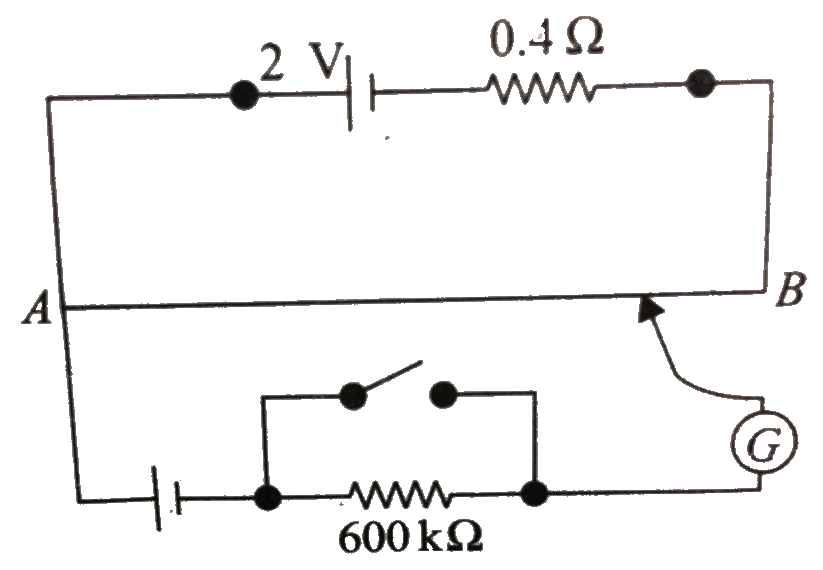 View Solution
View SolutionQuestion 22
In a meter bridge circuit, the two resistances in the gap are 5Ω and 10Ω. The wire resistance is 4Ω. The emf of the cell connected at the ends of the wire is 5V and its internal resistance is 1Ω. What current will flow through the galvenometer of resistance 30Ω if the contact is made at the midpoint of wire ?
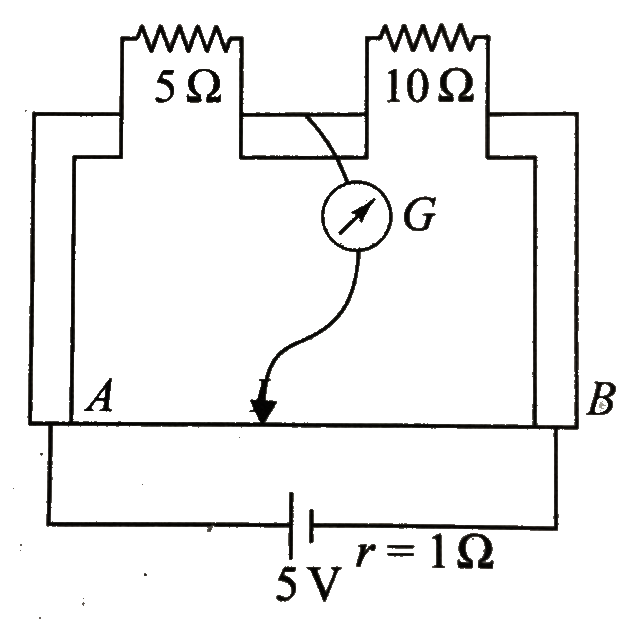 View Solution
View SolutionQuestion 25
A galvanometer reads 5⋅0V at full scale deflection and is graded according to its resistance per volt at full scale deflection as 5000ΩV−1. (i) How will you convert it into a voltmeter that reads 20V at full scale deflection? (ii) Will it still be graded 5000ΩV−1? (iii) Will you prefer this voltmeter to one that is graded 2000ΩV−1?View SolutionQuestion 26
A battery of emf 1.4V and internal resistance 2Ω is connected to a resistor of 100ω resistance through an ammeter. This resistance of the ammeter is 4/3Ω. A voltmeter has also been connected to find the potential difference across the resistor.
a. Draw the circuit diagram.
b. The ammeter reads 0.02A. What is the resistance of the voltmeter?
c. The voltmeter reads 1.1V. What is the error in the reading? View SolutionQuestion 34
In a meter bridge experiment, null point is obtained at 20cm from one end of the wire when resistance X is balanced against another resistance Y. If X<Y, then the new position of the null point from the same end, if one decides to balance a resistance of 4X against Y will be at.View SolutionQuestion 41
Two cells of emfs E1 and E2(E1>E2) are connected as shown in figure.

When a potentiometer is connected between A and B, the balancing length of the potentiometer wire is 300 cm. On connection the same potentiometer between A and C, the balancing length is 100 cm. The ratio E1E2 is View SolutionQuestion 45
Figure 6.49 shows a circuit that may be used to compare the resistance R of an unknown resistor with a 100Ω standard. The distance l from one end of the potentiometer slider wire to the balance point are 400mm and 588mm when X is connected to Y and Z, respectively. The length of the slide wire is 1.00m. What is the value of resistance R?
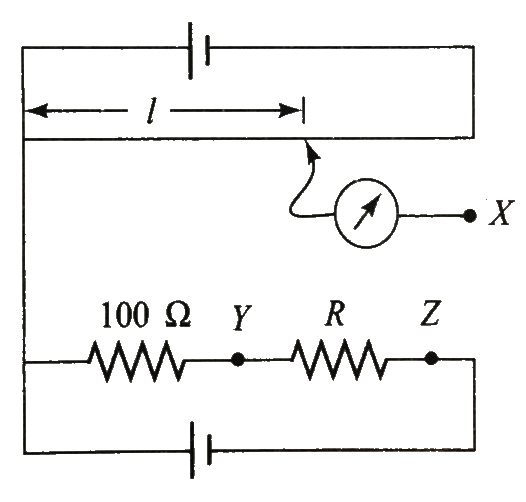 View Solution
View SolutionQuestion 48
Figure 6.51 shows a simple a potentiometer circuit for measuring a small emf produced by a thermocouple.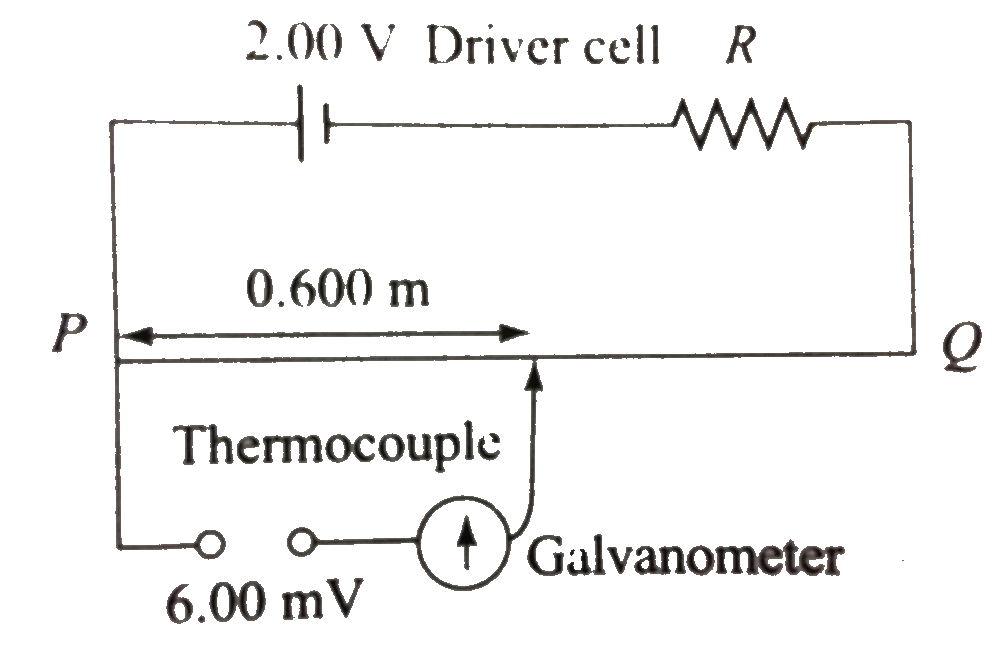
The meter wire PQ has a resistance of 5Ω, and the driver cell has an emf of 2.00V. If a balance point is obtained 0.600m along PQ when measuring an emf of 6.00mV,
what is the value of resistance R?View SolutionQuestion 50
In an experiment to measure the internal resistance of a cell by a potentiometer, it is found that the balance point is at a length of 2m when the cell is shunted by a 5Ω resistance and is at a length of 3m when the cell is shunted by a 10Ω resistance, the internal resistance of the cell is thenView SolutionQuestion 51
When an ammeter of negligible internal resistance is inserted in series with circuit, it reads 1A. When a voltmeter of very large resistance is connected across R1, it reads 3V. But when the points A and B are short-circuited by a conducting wire, then the voltmetre measures 10.5V across the battery. The internal resistance of the battery is equal to
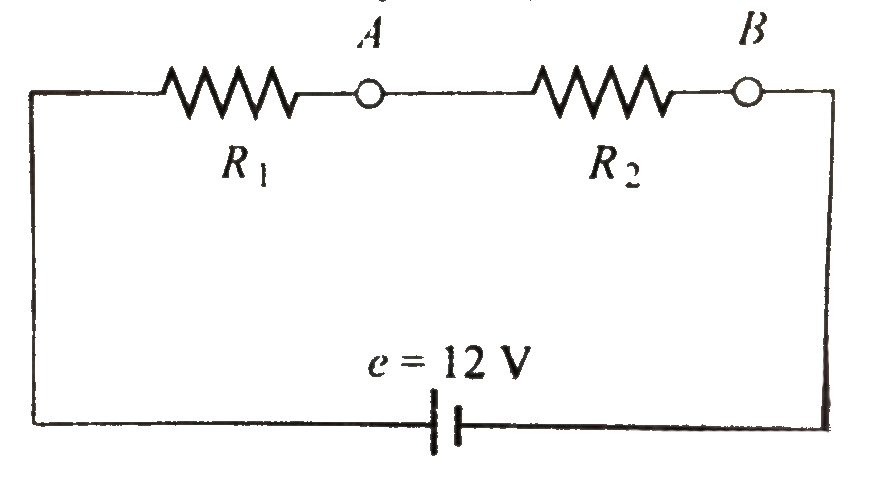 View Solution
View SolutionQuestion 53
A voltmeter having a resistance of 1800Ω employed to measure the potential difference across a 200Ω resistor which is connected to the terminals of a dc power supply having an emf of 50 V and an internal resistance of 20Ω. What is the percentage decrease in the potential difference across the 200Ω resistor as a result of connecting the voltmeter across it?View SolutionQuestion 55
The emf of the driver cell of a potentiometer is 2V, and its internal resistance is negligible. The length of the potentiometer wire is 100cm, and resistance is 5ohm. How much resistance is to be connected in series with the potentiometer wire to have a potential gradient of 0.05mVcm−1? View SolutionQuestion 66
Two moving coil galvanometers 1 and 2 are with identical field magnets and suspension torque constants, but with coil of different number of turns N1 and N2, area per turn A1 and A2, and resistance R1 and R2. When they are connected in series in the same circuit, they show deflections θ1 and θ2. then θ1/θ2 is View SolutionQuestion 81
This questions has Statement I and Statement II. Of the four choices given after the Statements, choose the one that best describes into two Statements.
Statement-I : Higher the range, greater is the resistance of ammeter.
Statement- II : To increase the range of ammeter, additional shunt needs to be used across it. View SolutionQuestion 88
A cell of emf 3.4V and internal resistance 3Ω is connected to an ammeter having resistance 2Ω and to an external resistance of 100Ω. When a voltmeter is connected across the 100Ω resistance, the ammeter reading is 0.04A. Find the voltage reading by the voltmeter and its resistance. Had the voltmeter been an ideal one what would have been its reading? View SolutionQuestion 89
A cell of emf 3.4V and internal resistance 3Ω is connected to an ammeter having resistance 2Ω and to an external resistance of 100Ω. When a voltmeter is connected across the 100Ω resistance, the ammeter reading is 0.04A. Find the voltage reading by the voltmeter and its resistance. Had the voltmeter been an ideal one what would have been its reading? View SolutionQuestion 90
In the connection shown in the figure, initially the switch K is open and the capacitor is uncharged. Then the switch is closed, and the capacitor is charged up to the steady state and the switch is opened again. Determine the values indicated by the values indicated by the ammeter just after closing the switch
[GivenV0=30V,R1=10kΩ,R2=5kΩ]
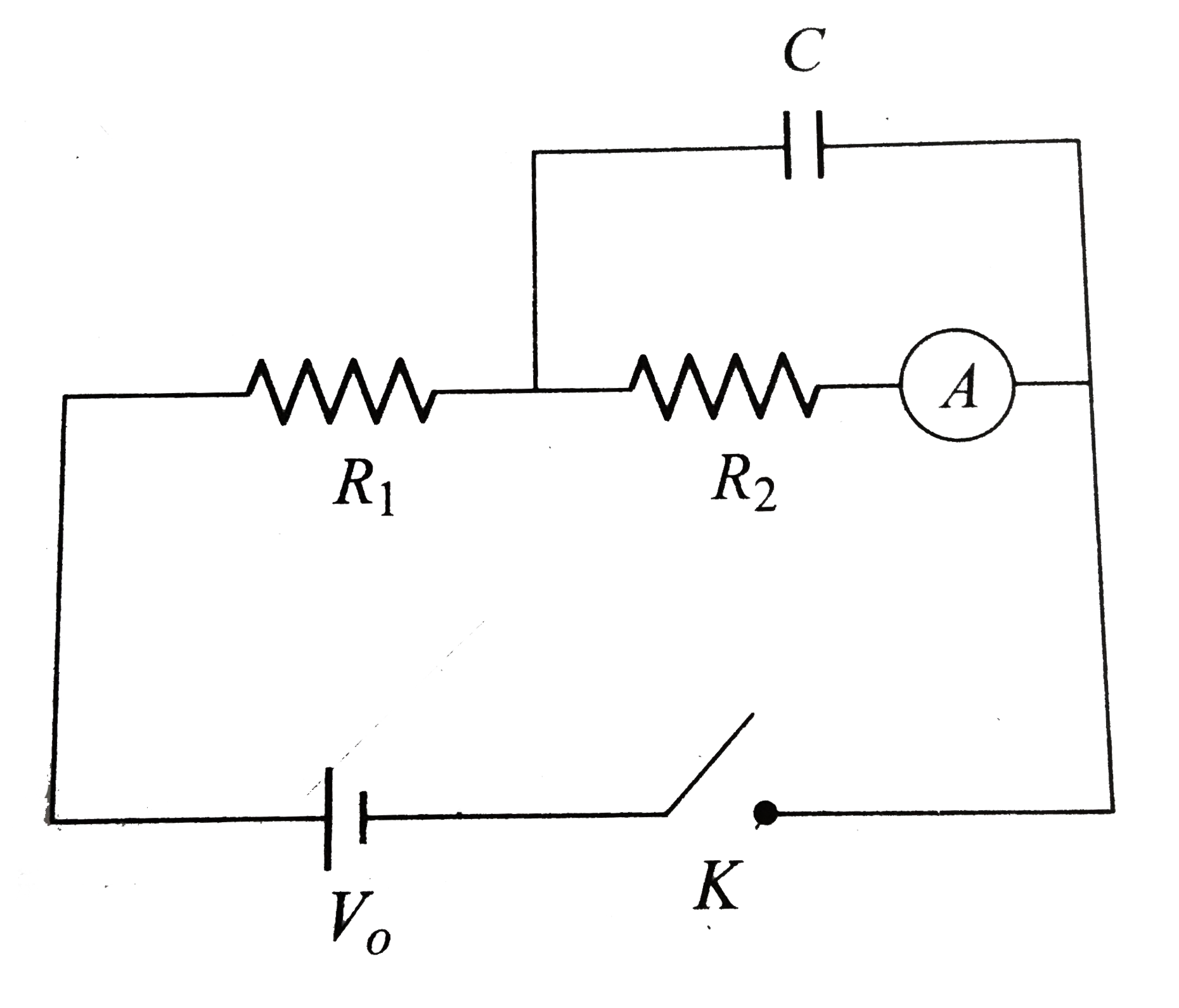 .
.
A long time after switch was closed.View SolutionQuestion 91
In the connection shown in the figure, initially the switch K is open and the capacitor is uncharged. Then the switch is closed, and the capacitor is charged up to the steady state and the switch is opened again. Determine the values indicated by the values indicated by the ammeter.
[GivenV0=30V,R1=10kΩ,R2=5kΩ]
 .
.
A long time after the switch was closed. View SolutionQuestion 92
In the connection shown in the figure, initially the switch K is open and the capacitor is uncharged. Then the switch is closed, and the capacitor is charged up to the steady state and the switch is opened again. Determine the values indicated by the values indicated by the ammeter.
[GivenV0=30V,R1=10kΩ,R2=5kΩ]
 .
.
A long time after the switch was closed. View SolutionQuestion 93
A potentiometer with a cell of EMF 2V and internal resistance 0.4Ω is used across the wire AB. A standard cadmium cell of EMF 1.02V gives a balance point at 66cm length of wire. The standard cell is then replaced by a cell of unknows EMF e (internal resistance r), and the balance. Point found similarly turns out to be 88cm length of the wire. The length of potentiometer wire AB is 1m.
The value of e is View SolutionQuestion 94
is made of uniform material and cross-sectional area, and it has uniform resistance per unit length. The potential gradient depends upon the current in the wire.
A potentiometer with a cell of emf 2V and internal resistance 0.4Ω is used across the wire AB. A standard cadmium cell of emf 1.02V gives a balance point at 66cm length of wire. The standard cell is then replaced by a cell of unknows emf e (internal resistance r), and the balance. Point found similarly turns out to be 88cm length of the wire. The length of potentiometer wire AB is 1m.
The reading of the potentiometer, if a 4V battery is used instead of e is View SolutionQuestion 95
A potentiometer with a cell of EMF 2V and internal resistance 0.4Ω is used across the wire AB. A standard cadmium cell of EMF 1.02V gives a balance point at 66cm length of wire. The standard cell is then replaced by a cell of unknows EMF e (internal resistance r), and the balance. Point found similarly turns out to be 88cm length of the wire. The length of potentiometer wire AB is 1m.
The value of e is View SolutionQuestion 96
The length of a potentiometer wire AB is 600cm, and it carries a constant current of 40mA from A to B. For a cell of emf 2V and internal resistance 10Ω, the null point is found at 500cm from A. When a voltmeter is connected across the cell, the balancing length of the wire is decreased by 10cm.

Potential gradient along AB is View SolutionQuestion 97
The length of a potentiometer wire is 600cm and it carries a current of 40mA. For a cell of emf 2V and internal resistance 10Ω, the null point is found to be ast 500cm. On connecting a voltmeter acros the cell, the balancing length is decreased by 10cm
The voltmeter reading will beView SolutionQuestion 98
The length of a potentiometer wire is 600 cm and it carries a current of 40mA. For a cell of emf 2V and internal resistance 10Ω, the null point is found to be at 500cm. On connecting a voltmeter acros the cell, the balancing length is decreased by 10cm
The resistance of the voltmeter is View SolutionQuestion 101
A potentiometer wire of length 10m and resistance 30Ω is connected in series with a battery of emf 2.5V, internal resistance 5Ω and an external resistance R. If the fall of potential along the potentiometer wire is 50μVmm−1, then the value of R is found to be 23nΩ. What is n?View SolutionQuestion 103
A 5m potentiometer wire having 3Ω resistance per meter is connected to a storage cell of steady emf 2V and internal resistance 1Ω. A primary cell is balanced against 3.5m of it. When a resistance of 32/nΩ is put in series with the storage cell, the null point shifts to the centre of the last wire, i.e., 4.5m. What is 'n'?View SolutionQuestion 106
A galvanometer, together with an unknown resistance in series, is connected across two identical batteries of each 1.5V. When the batteries are connected in series,the galvanometer records a current of 1A, and when the batteries are connected in parallel, the current is 0.6A. In this case, the internal resistance of the battery isView SolutionQuestion 107
In Fig. 6.76, the ammeter (I) reads a current of 10mA, while the voltmeter reads a potential difference of 3V. The ammeters are identical, and the internal resistance of the battery is negligible (consider all ammeters and voltmers as nonideal).
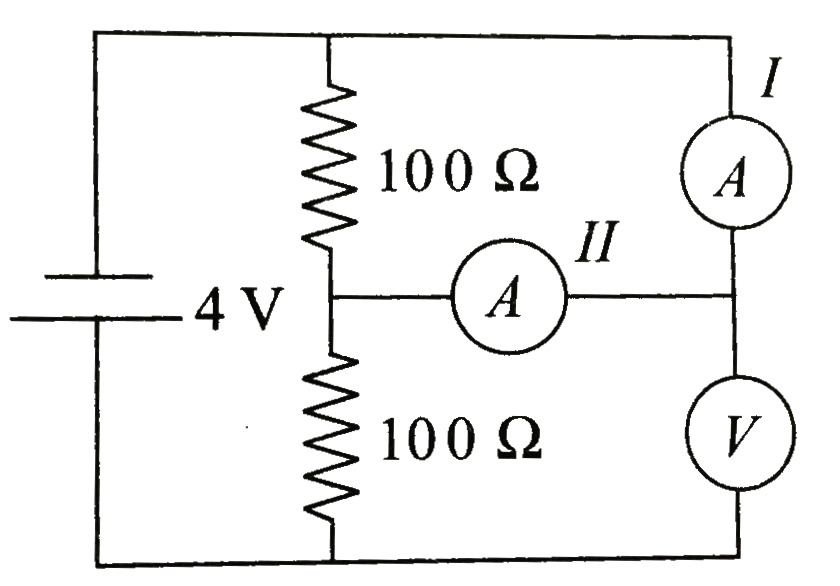
The resistance of ammeter is m×102Ω. What is the value of m ?View Solution



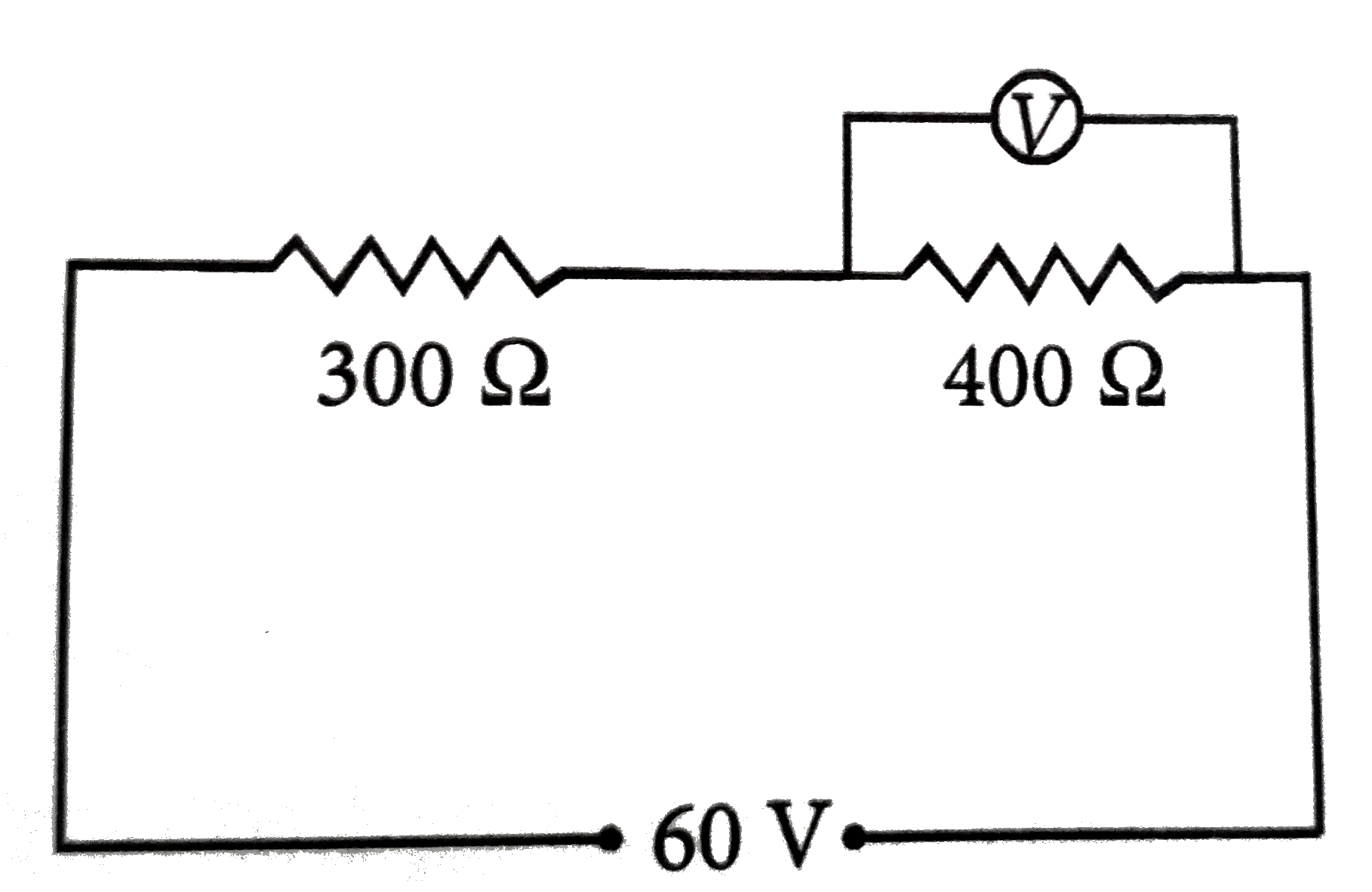
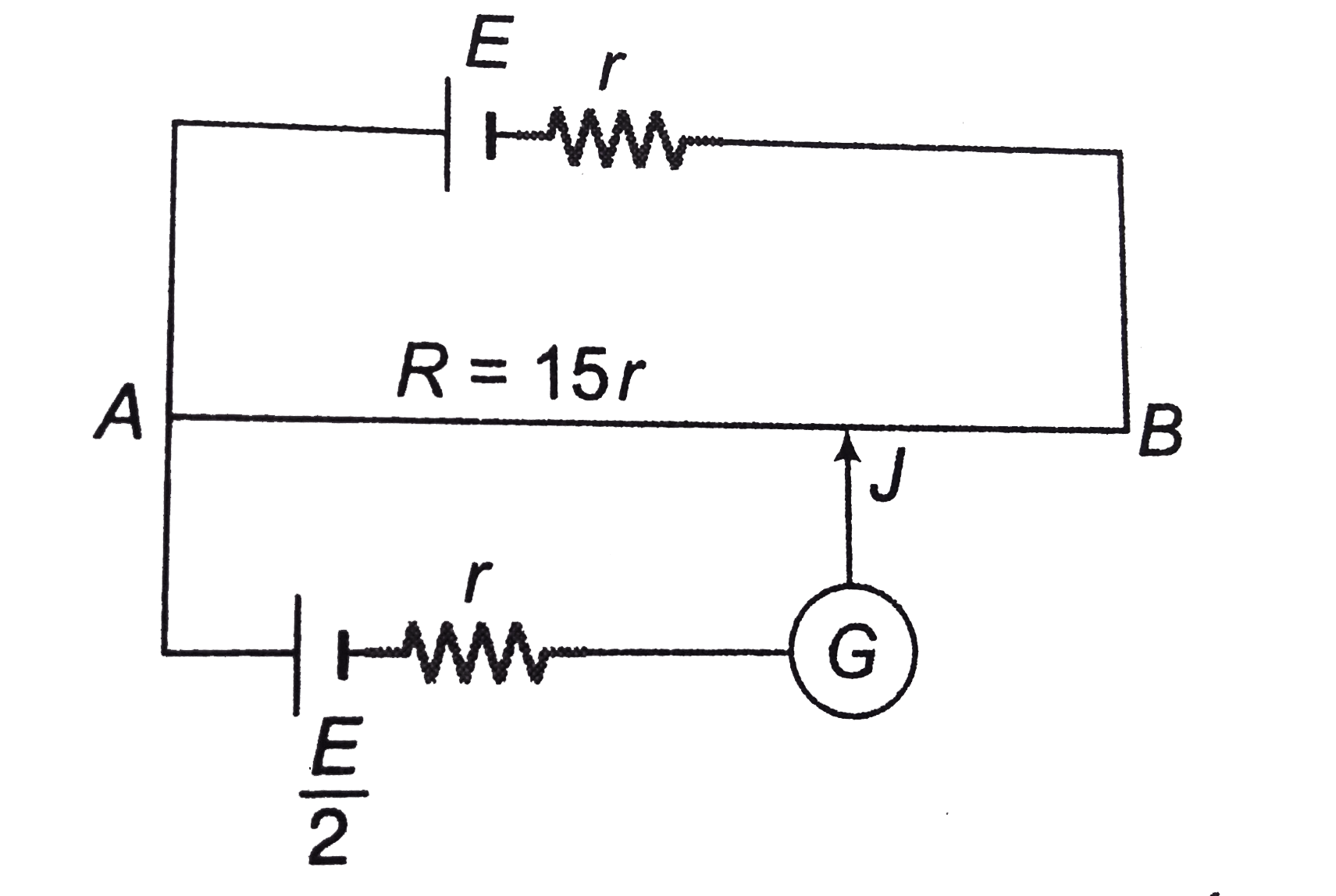 a. At what distance from A should be jockey
a. At what distance from A should be jockey 